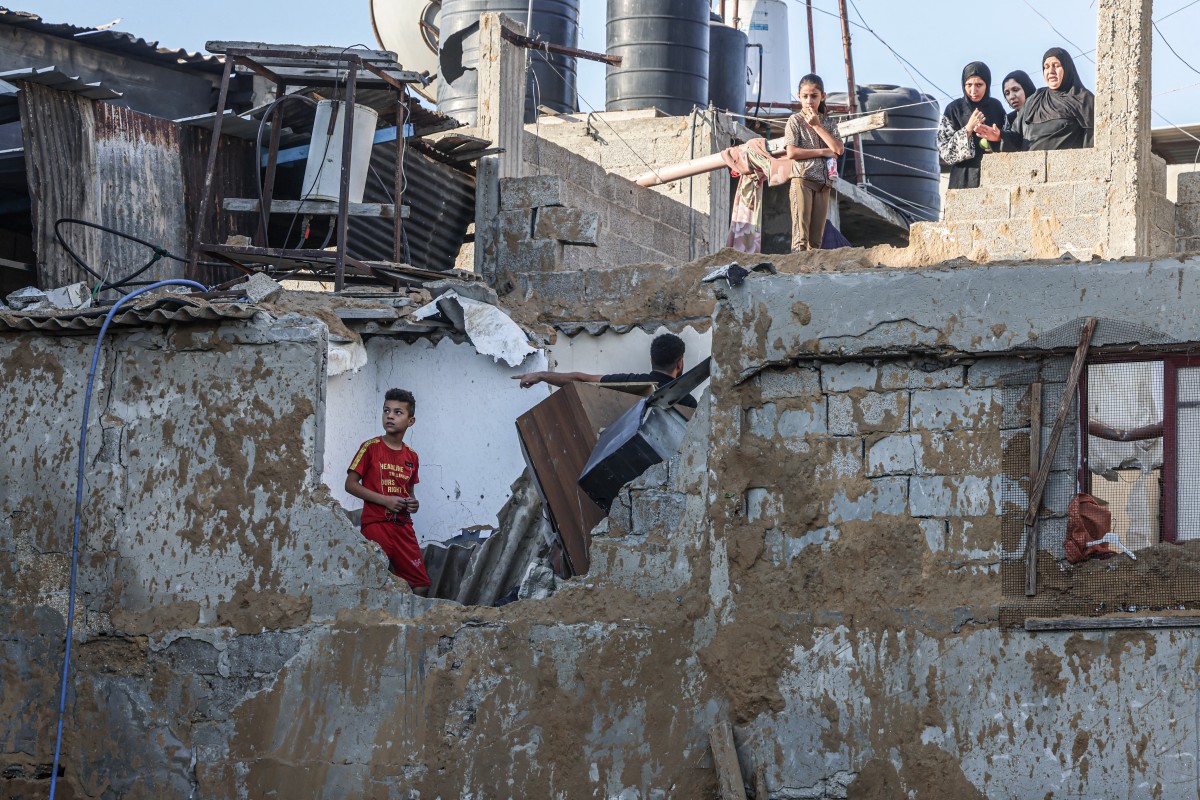
403
Sorry!!
Error! We're sorry, but the page you were looking for doesn't exist.
Israeli military continues its campaign of genocide, ethnic cleansing in northern Gaza Strip
(MENAFN) As the Israeli military continues its campaign of genocide and ethnic cleansing in the northern Gaza Strip, waves of displaced individuals continue to flood into Gaza City, where they are forced to live in harsh conditions within temporary shelters. New makeshift camps have sprung up in public spaces, playgrounds, and clubs across Gaza City to accommodate the displaced families who fled the relentless shelling and the threat of death in northern Gaza. These camps, however, are poorly equipped, with residents enduring severe shortages of food, water, and shelter, compounded by bitterly cold weather. Despite efforts by local communities and charities to provide basic needs, the available resources remain insufficient to meet the daily demands of the displaced population.
Before the military operations began on October 5, about 200,000 Palestinians lived in northern Gaza. However, the ongoing violence has forced approximately 130,000 people to flee, according to the United Nations Relief and Works Agency (UNRWA). Many of the displaced have moved to Gaza City, particularly its western and central areas, after refusing to evacuate to the southern Gaza Strip as demanded by the Israeli army. Under the Israeli siege, more than 8,000 aid trucks have been blocked from entering Gaza, further exacerbating the humanitarian crisis. Despite repeated appeals, the Israeli military has denied requests to allow aid into the region, which the Gaza government declared a "disaster area" on November 5.
In the aftermath of nearly two months of devastating conflict in northern Gaza, the influx of displaced people into Gaza City has led to a significant increase in the number of makeshift camps. Traditionally, displaced people sought refuge in the homes of relatives or in local schools and health centers, but as the number of displaced families surged, these spaces were no longer available. Forced to live in tents, many residents now face constant threats from nearby Israeli airstrikes and the harsh winter cold. Rushdi Ghabin, who was displaced from Beit Lahiya with his 13-member family, shared his experience with Anadolu Agency. After spending two days sleeping on the street, they were forced to find shelter in a tent in a newly established camp in Beach camp in western Gaza. While life in the tents is difficult, especially at night, Ghabin explained it was still preferable to living on the streets.
Many from Beit Lahiya, like Ghabin, reluctantly left their homes after the Israeli military forcibly displaced them, despite previously enduring hunger and thirst in their homes to avoid leaving. The people of Gaza continue to endure immense hardship as they await the possibility of returning to their homes, while struggling to survive in these dire conditions.
Before the military operations began on October 5, about 200,000 Palestinians lived in northern Gaza. However, the ongoing violence has forced approximately 130,000 people to flee, according to the United Nations Relief and Works Agency (UNRWA). Many of the displaced have moved to Gaza City, particularly its western and central areas, after refusing to evacuate to the southern Gaza Strip as demanded by the Israeli army. Under the Israeli siege, more than 8,000 aid trucks have been blocked from entering Gaza, further exacerbating the humanitarian crisis. Despite repeated appeals, the Israeli military has denied requests to allow aid into the region, which the Gaza government declared a "disaster area" on November 5.
In the aftermath of nearly two months of devastating conflict in northern Gaza, the influx of displaced people into Gaza City has led to a significant increase in the number of makeshift camps. Traditionally, displaced people sought refuge in the homes of relatives or in local schools and health centers, but as the number of displaced families surged, these spaces were no longer available. Forced to live in tents, many residents now face constant threats from nearby Israeli airstrikes and the harsh winter cold. Rushdi Ghabin, who was displaced from Beit Lahiya with his 13-member family, shared his experience with Anadolu Agency. After spending two days sleeping on the street, they were forced to find shelter in a tent in a newly established camp in Beach camp in western Gaza. While life in the tents is difficult, especially at night, Ghabin explained it was still preferable to living on the streets.
Many from Beit Lahiya, like Ghabin, reluctantly left their homes after the Israeli military forcibly displaced them, despite previously enduring hunger and thirst in their homes to avoid leaving. The people of Gaza continue to endure immense hardship as they await the possibility of returning to their homes, while struggling to survive in these dire conditions.

Legal Disclaimer:
MENAFN provides the
information “as is” without warranty of any kind. We do not accept
any responsibility or liability for the accuracy, content, images,
videos, licenses, completeness, legality, or reliability of the information
contained in this article. If you have any complaints or copyright
issues related to this article, kindly contact the provider above.


















Comments
No comment